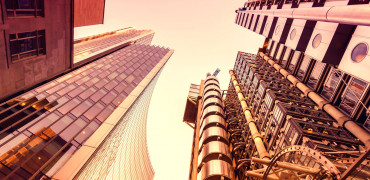Air quality has hit the headlines again as the Mayor of London introduced a £10 toxicity charge for the most polluting cars. Air pollution in London is a public-health crisis, and the Mayor has been forced to take hard-hitting action to tackle it head on. Currently over 9,000 Londoners die prematurely each year as a result of long-term exposure to air pollution, while 438 schools in the capital are in areas exceeding legal air-quality levels.
Other major cities are also struggling to meet current guidelines, with air pollution contributing up to 40,000 early deaths a year across the UK. A powerful coalition of environmental campaigners, health bodies and industry groups has launched a campaign to force the Government to take “urgent action” on air pollution by creating new legislation 60 years after the original Clean Air Act was created to tackle urban smog.
The group, which includes Greenpeace, Friends of the Earth, the Royal College of Physicians, the British Lung Foundation and environmental lawyers ClientEarth, wants the UK to accelerate the take up of electric vehicles and give the UK the most ambitious air quality legislation in Europe.
While tackling emissions from transport is vital, many in the building-services industry believe much could also be achieved in a shorter time frame by focussing on how building occupants can be protected from rising external pollution.
While tackling emissions from transport is vital, many in the building-services industry believe much could also be achieved in a shorter time frame by focussing on how building occupants can be protected from rising external pollution.
“People spend more than 80% of their time indoors and there is still a lot more we can do to improve indoor air quality (IAQ),” said Paul McLaughlin, chief executive of the Building Engineering Services Association (BESA). “A series of low-cost maintenance measures to ensure ventilation systems work properly and incoming air is filtered and cleaned would make a major difference to the health and well-being of building occupants.”
Airtightness in buildings has improved in the bid to reduce energy consumption as the UK strives to meet its carbon-reduction targets. Adequate ventilation in airtight buildings is essential and mechanical ventilation with heat recovery (MVHR) systems offer an energy-efficient way of introducing ventilation in polluted cities where simply opening the windows is not an option.

Polluting cars
Mayor of London introduced a £10 toxicity charge for the most polluting cars.
“A well-sealed building envelope combined with effective filtration of incoming supply air can reduce particle penetration by 78%,” said McLaughlin. “Considerable investment has already been made in improving the airtightness of buildings to reduce energy consumption and that same process can be used to manage air quality.”
“The general public already understands the impact temperature has on healthy and productive conditions inside buildings — we now need to stress that the same principle should apply to air quality,” said McLaughlin. “When it is too hot or cold outside, people now expect to be able to enjoy comfortable temperatures inside. They should also expect similar protection from rising air pollution.”
Ken Sharpe is editor of Modern Building Services.
If you have any questions about this article or want to know more, please email us. We will contact the author and will get back to you as soon as we can.

